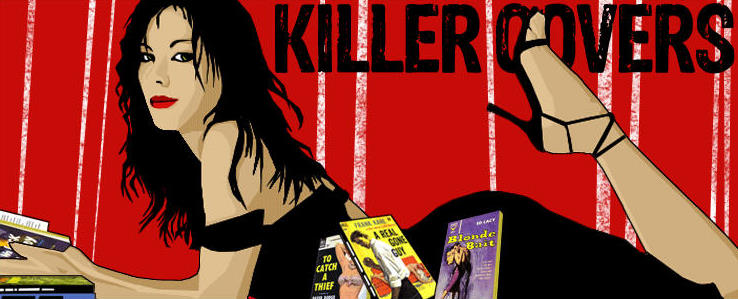

My weekday morning routine goes like this: I somehow force myself out of bed, traipse down to the kitchen to make coffee, and then head to my office to fire up the computer and check out that day’s early news headlines. Today those headlines took me to Paul Rosenberg’s fascinating article in Salon about a new academic study that suggests conservatives are prone to see a different, rather more hostile world around them than liberals do. The study, written by John R. Hibbing of the University of Nebraska, appears in the journal Behavioral and Brain Sciences. As Rosenberg explains,
It advances three successive waves of evidence, which combine to show that conservatives differ from liberals by having stronger, more intense reactions to negative aspects of the environment--such as physical threats, or potential sources of disease--which are ultimately physiological. At the same time, with multiple forms of mass hysteria going on at once, American conservatives seem dead set on proving the scientists right, and underscoring the importance of the work they’re doing.Hibbing posits that these conservative anxieties could be provoked by a combination of genetic as well as environmental factors. Indeed, children reared to fear the world and to think of themselves as potential victims of both change and the unexpected might well grow up to impart those same qualms to their offspring.
But here’s the twist: The scientists themselves insist that “citing differences in the psychological and physiological traits of liberals and conservatives is not equivalent to declaring one ideology superior to the other.” While this may be true in an abstract sense, and a mix of psychological tendencies makes a society more robust in the long run--balancing needs for caution and self-preservation with needs for exploration, innovation and renewal--in 21st-century America, things look strikingly different.
Conservative fears of nonexistent or overblown boogeymen--Saddam’s WMD, Shariah law, voter fraud, Obama’s radical anti-colonial mind-set, Benghazi, etc.--make it hard not to see conservatism’s prudent risk avoidance as having morphed into a state of near permanent paranoia, especially fueled by recurrent “moral panics,” a sociological phenomenon in which a group of “social entrepreneurs” whips up hysterical fears over a group of relatively powerless “folk devils” who are supposedly threatening the whole social order. Given that conservatism seems to be part of human nature--just as liberalism is--we’re going to need all the help we can get in figuring out how to live with it, without being dominated, controlled and crippled by it.
How does all of this figure into a post about vintage book covers? Because crime fiction commonly involves victims or one sort of another. That’s occasionally spelled out clearly in book titles, such as the two spotlighted above.
On the left we find the front from the 1956 Dell Books edition of Be My Victim, by Robert Dietrich (a pseudonym often employed by E. Howard Hunt, a U.S. intelligence agent and author who was implicated in Richard Nixon’s Watergate scandal). Blogger Utter Scoundrel, at Lies! Damned Lies!, writes of this novel:
Local building contractor Bruce Kendall starts to get pushed around by local Florida hoods. That’s the basic set-up. What surprised me was how quickly Dietrich got the ball rolling with the action when other writers would have probably spent some more time establishing things and building up the action. I’m not complaining. I’m not a fan of wool-gathering when it comes to these types of novels.The cover image on Be My Victim is credited to Arthur Sussman (1927-2008), a Brooklyn-born artist who spent at least a decade in New York City working as a designer and illustrator, before eventually relocating to New Mexico. An online biography explains that “Much of [Sussman’s] personal work was inspired by stories from the Old Testament. Beginning in 1960 and continuing almost until his death, Arthur created numerous works of art based on Biblical teaching and stories.” There’s nothing remotely holy about his painting for Be My Victim, though--quite the contrary.
Kendall turns out to be quite a tough cookie. He discovers a saboteur trying to blow up his yacht one night; accidentally kills him in self defense; decides to blow up the ship anyway, making it look like he was killed to the authorities; swims to shore; rescues a friend who’s being tortured by a thug; then pushes said torturer out of a speeding car in retribution.
All in a night’s work.
Meanwhile, the paperback façade above and on the right comes from The Perfect Victim, a 1958 Dell release by James McKimmey (1923-2011). In a piece for Allan Guthrie’s Noir Originals site, Bill Crider said that novel “demonstrates [McKimmey’s] ability to handle a large cast of characters while moving the story right along. The novel is set in a small Midwestern town that traveling salesman Al Jackson thinks is likely to be ‘about as lively as a Baptist church on a Monday morning.’ What Al doesn’t know, of course, is that the town is going to be really jumping before long, and Al’s going to wind up accused of the murder of Grace Amons, a popular waitress in a local café. It’s not giving away any secrets to say that Al’s not guilty. This book isn’t a whodunit, as the reader knows the killer’s identity. The question is one of whether the killer will get away with what he’s done. And for a good while, it looks as if he will.”
Responsibility for The Perfect Victim’s artwork goes to Robert K. Abbett, about whom I have written several times on this page, including here. Its moody blue imagery is enchanting--and nothing to be afraid of, I think, no matter how inclined one is to fear potential risks at life’s every turning.





No comments:
Post a Comment